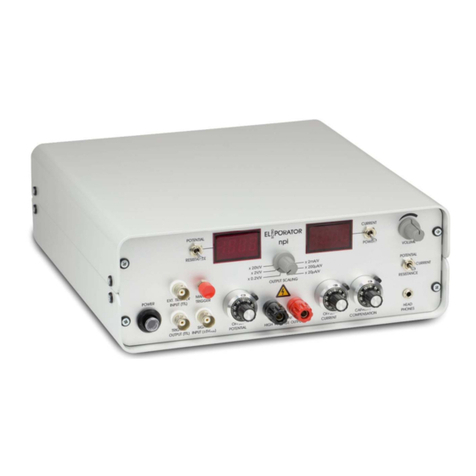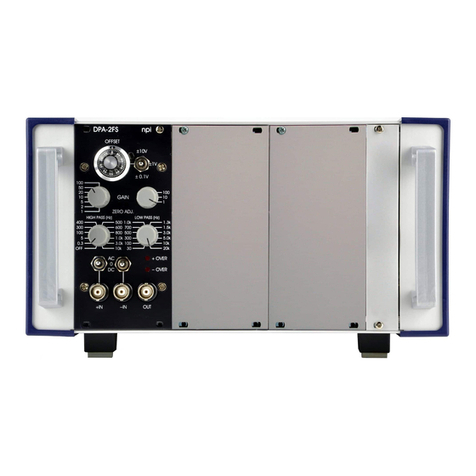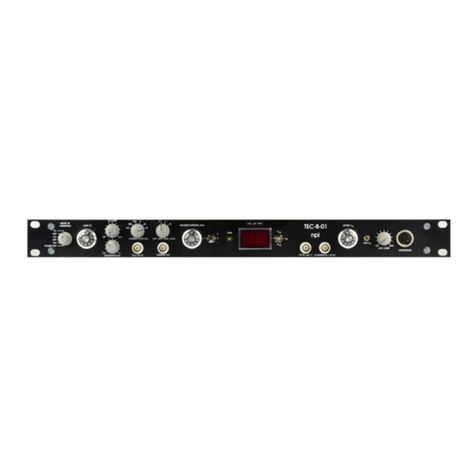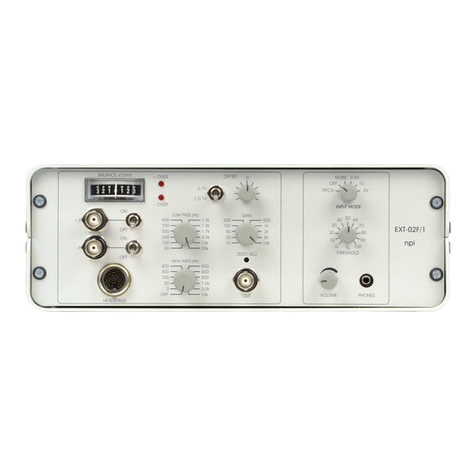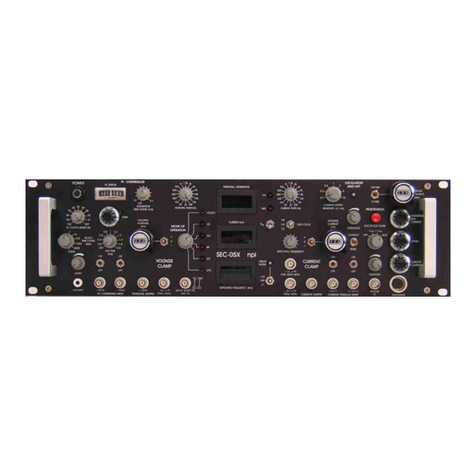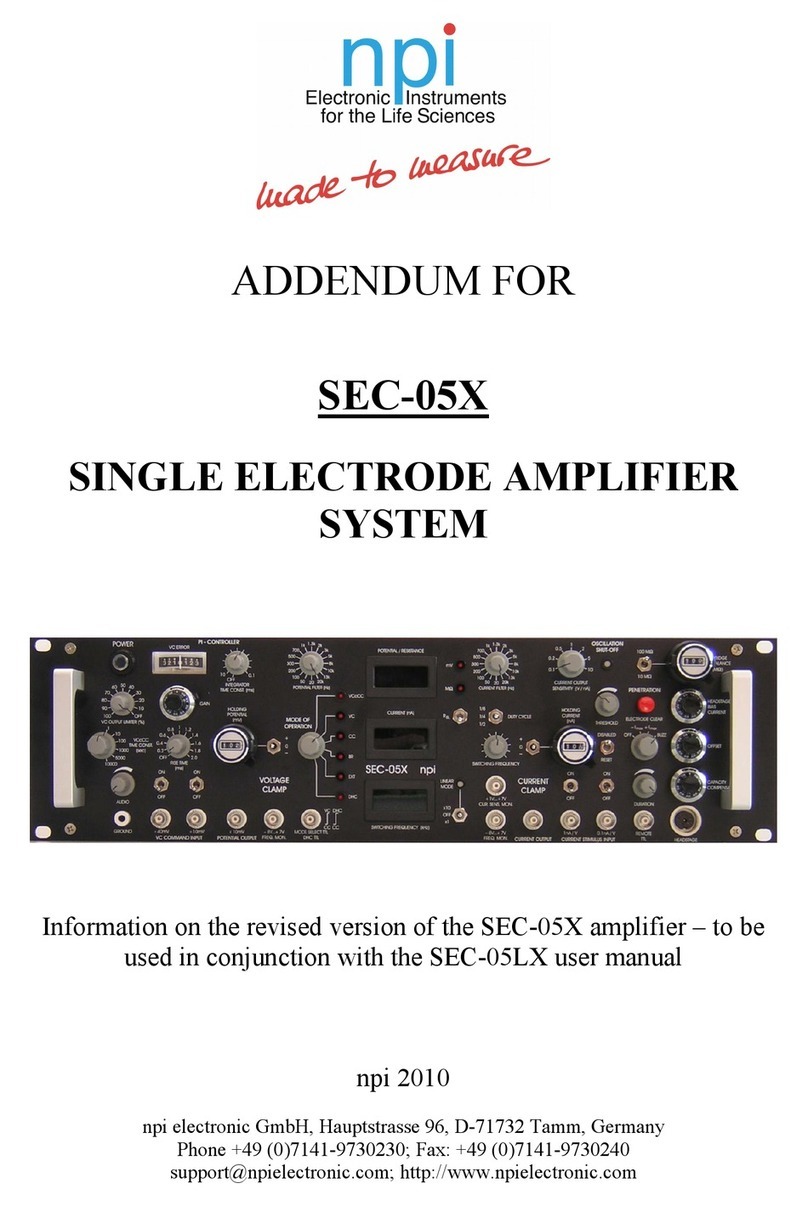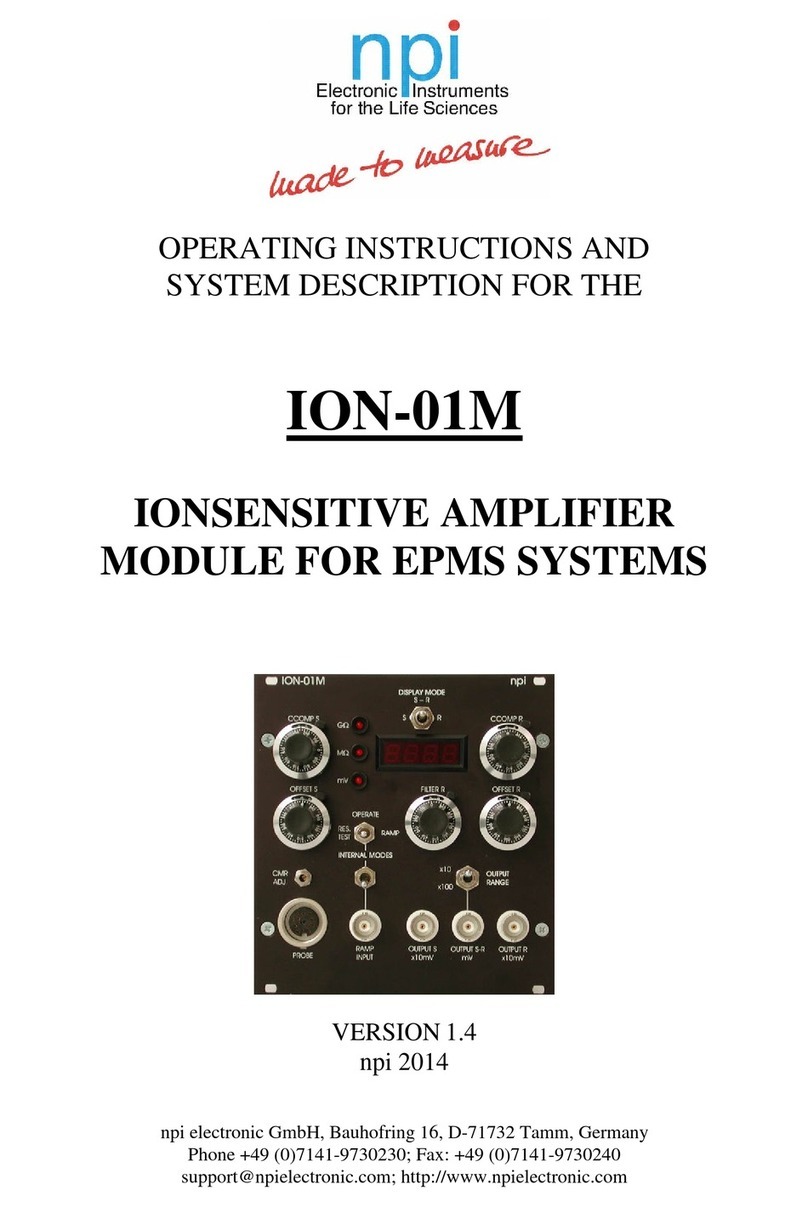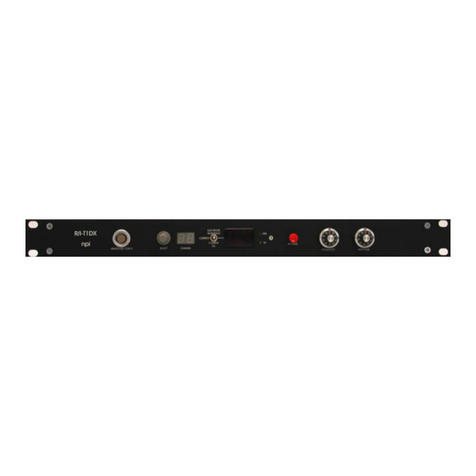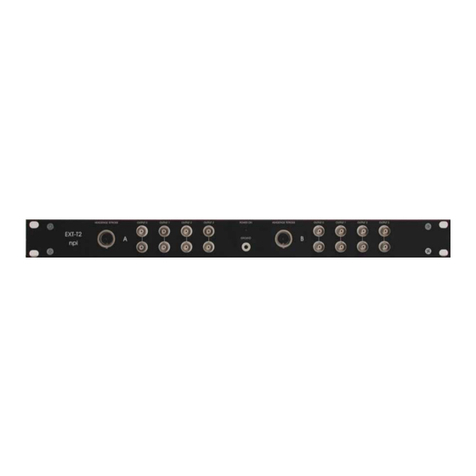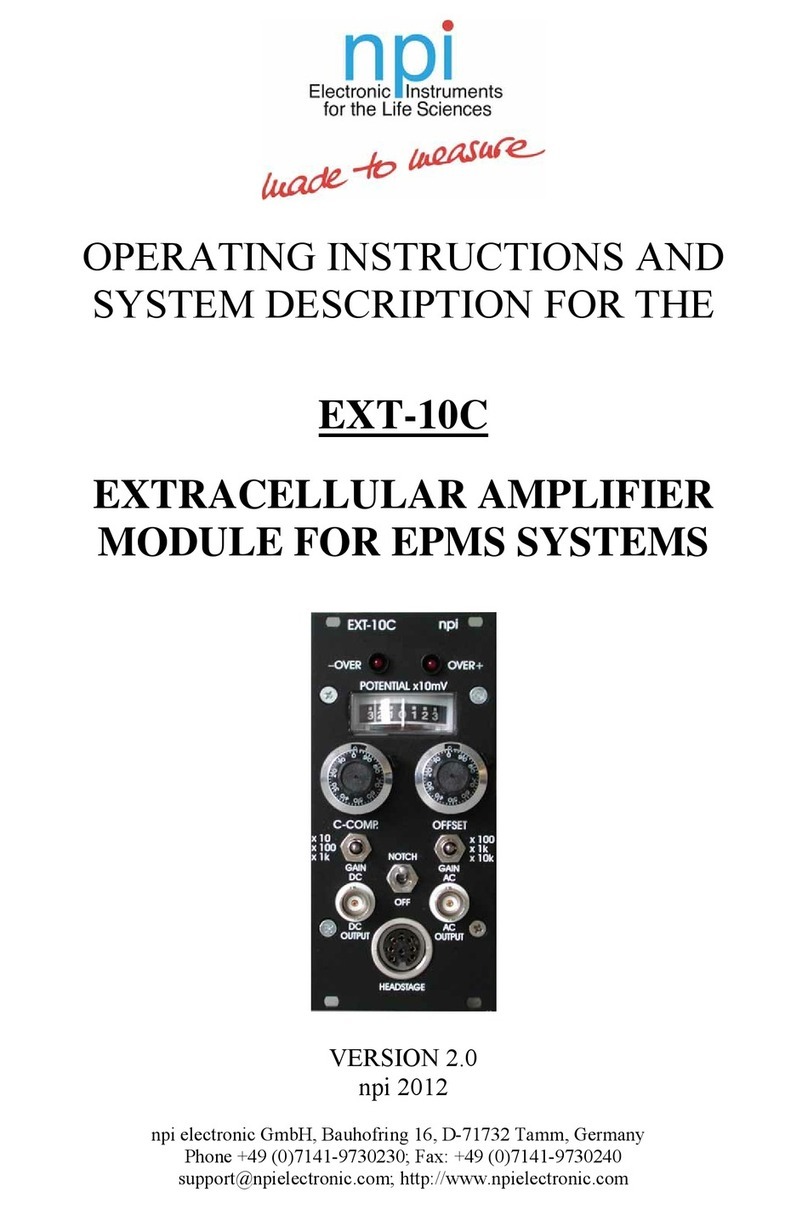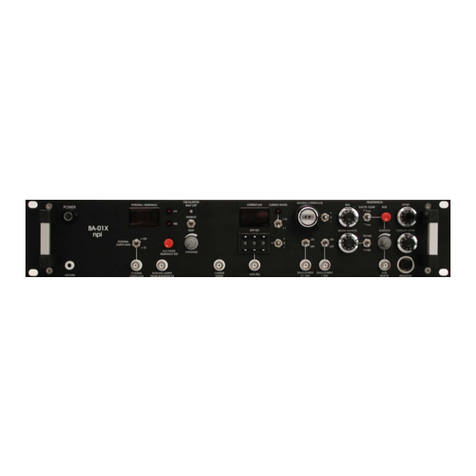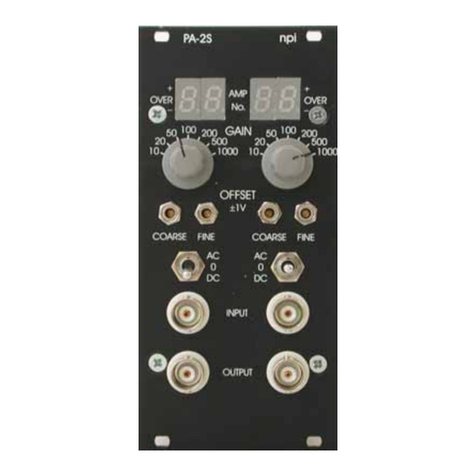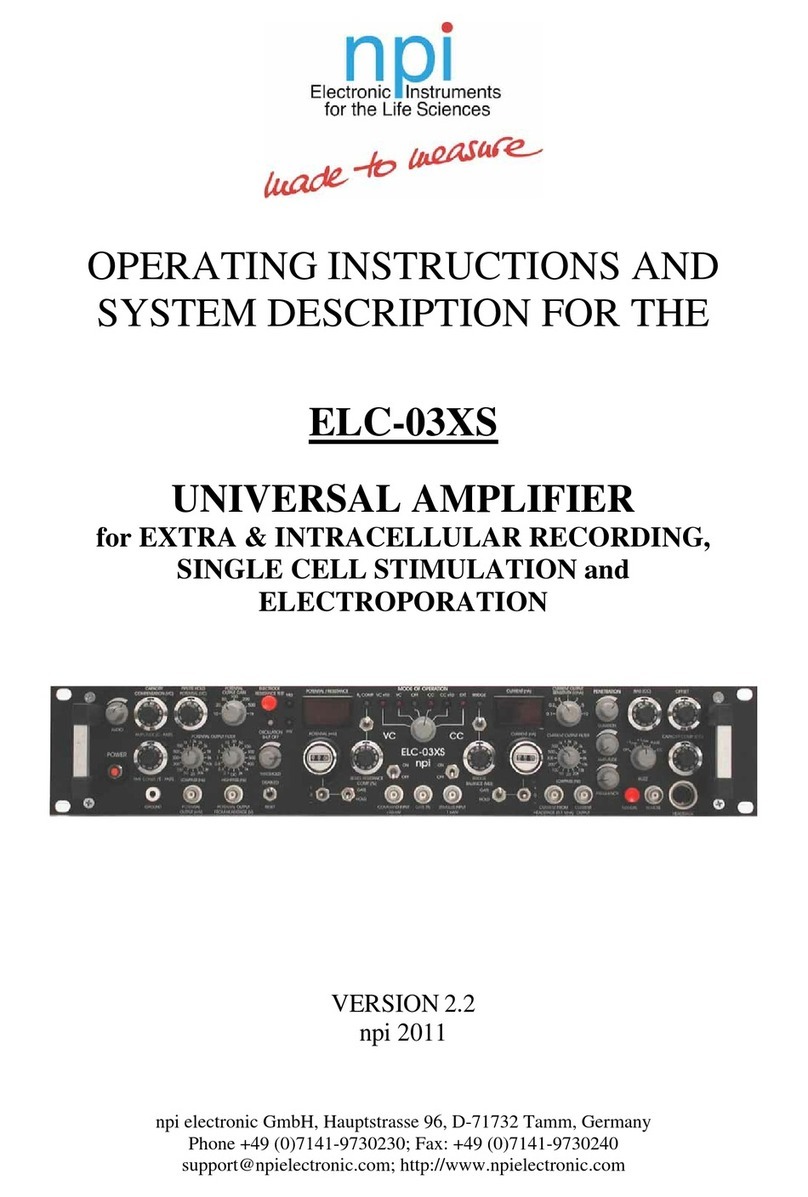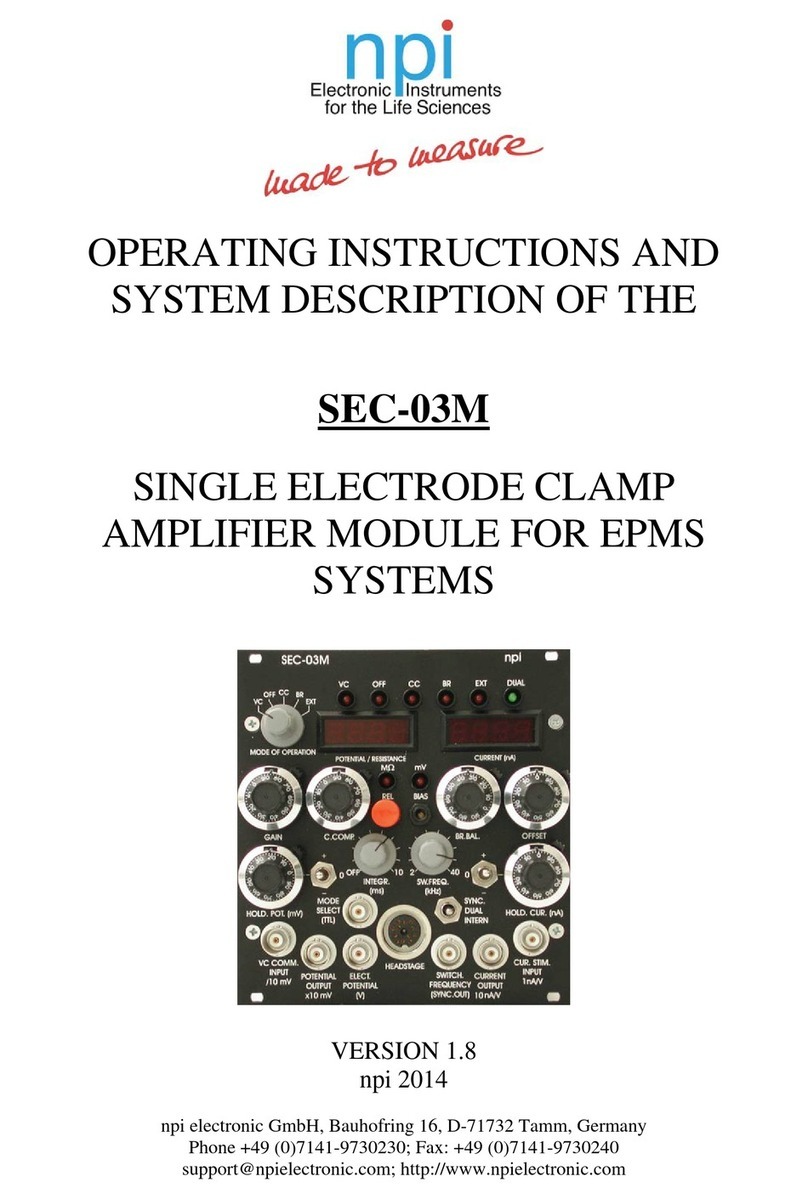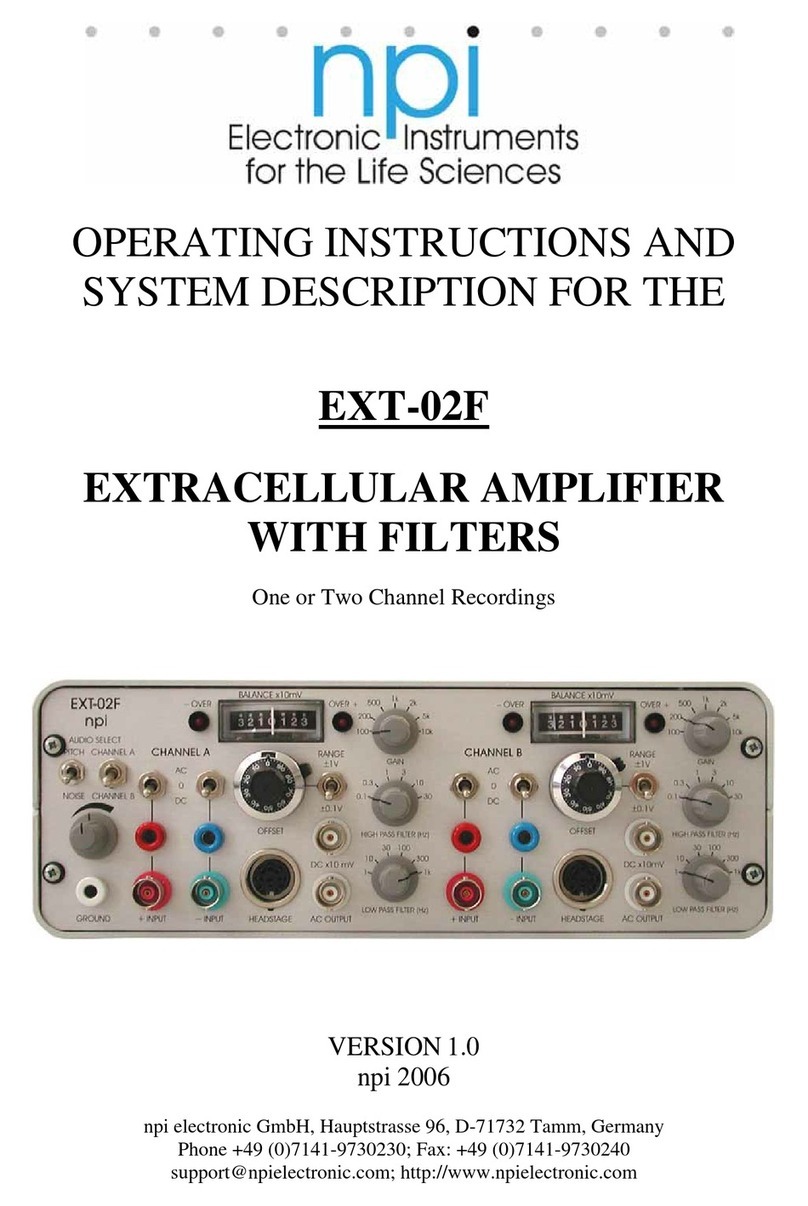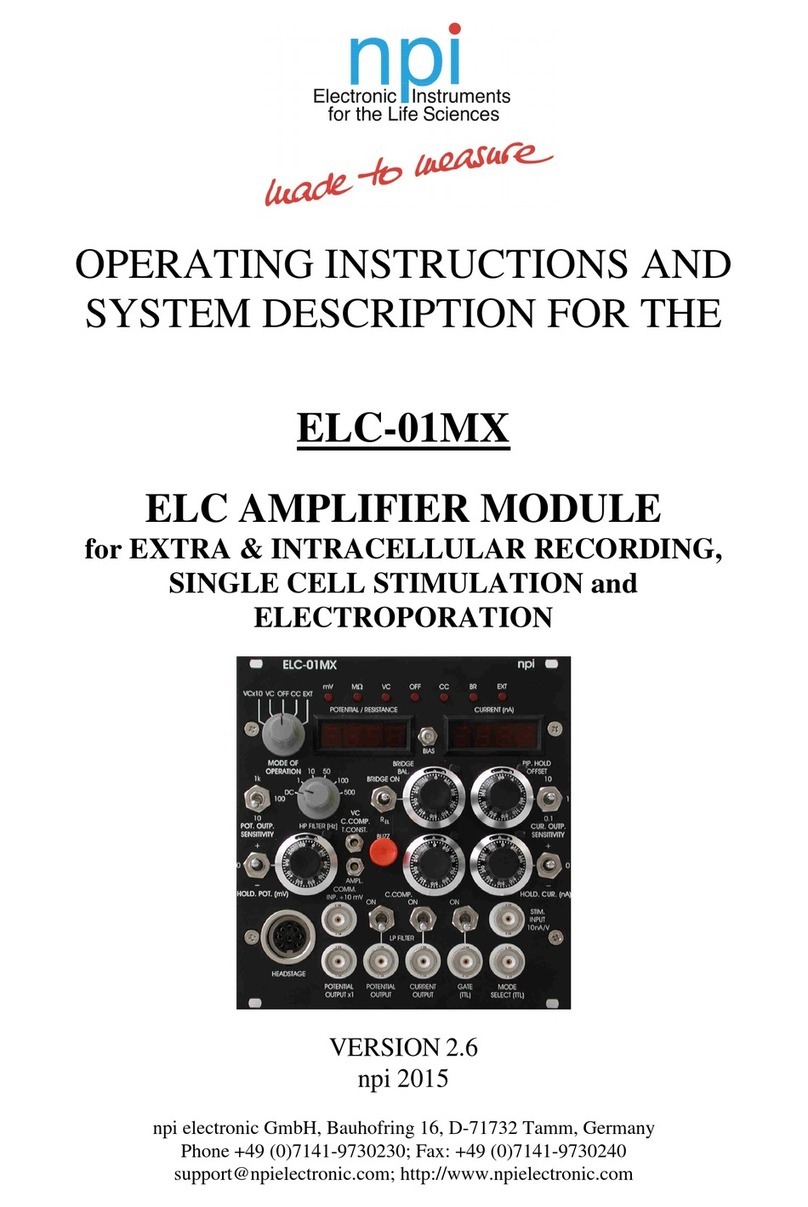DPA-2FL User Manual
___________________________________________________________________________
___________________________________________________________________________
version 1.1 page 10
4. Literature
Barmashenko, G., Eysel, U. T., & Mittmann, T. (2003). Changes in intracellular calcium
transients and LTP in the surround of visual cortex lesions in rats. Brain Res. 990, 120-
128.
Boulton, A. A., Baker, G. B. & Vanderwolf, C. H. (eds.) (1990). Neurophysiological
Techniques, Basic Methods and Concepts. Humana Press, Clifton, New Jersey.
Huemmeke, M., Eysel, U. T., & Mittmann, T. (2002). Metabotropic glutamate receptors
mediate expression of LTP in slices of rat visual cortex. Eur.J.Neurosci. 15, 1641-1645.
Huemmeke, M., Eysel, U. T., & Mittmann, T. (2004). Lesion-induced enhancement of
LTP in rat visual cortex is mediated by NMDA receptors containing the NR2B subunit. J
Physiol 559 , 875-882.
Schulz, D., Huston, J. P., Jezek, K., Haas, H. L., Roth-Harer, A., Selbach, O., & Luhmann,
H. J. (2002). Water maze performance, exploratory activity, inhibitory avoidance and
hippocampal plasticity in aged superior and inferior learners. Eur.J.Neurosci. 16, 2175-
2185.
Kettenmann, H. & Grantyn, R. (eds.) (1992). Practical Electrophysiological Methods.
Wiley-Liss, New York
Lalley, P.M., A.K. Moschovakis and U. Windhorst (1999) Electrical Activity of Individual
Neurons In Situ: Extra- and Intracellular Recording, in: U. Windhorst and H. Johansson
(eds.) Modern Techniques in Neuroscience Research, Springer, Berlin, New York
Müller, Ch.M. (1992) Extra- and Intracellular Recording in the Slice, in: Kettenmann, H.
& Grantyn, R. (eds.) Practical Electro-physiological Methods, Wiley-Liss, New York
Ogden, D. (ed.) (1992) Microelectrode Techniques - The Plymouth Workshop Handbook,
Second Edition, The Company of Biologists Ltd., Cambridge
Seidenbecher, T. and H.C. Pape (2001) Contribution of intralaminar thalamic nuclei to
spike-and-wave-discharges during spontaneous seizures in a genetic rat model of absence
epilepsy, European Journal of Neuroscience, Vol. 13:1537-1546
Windhorst, U. and H. Johansson (eds.) (1999) Modern Techniques in Neuroscience
Research, Springer, Berlin, Heidelberg, New York
